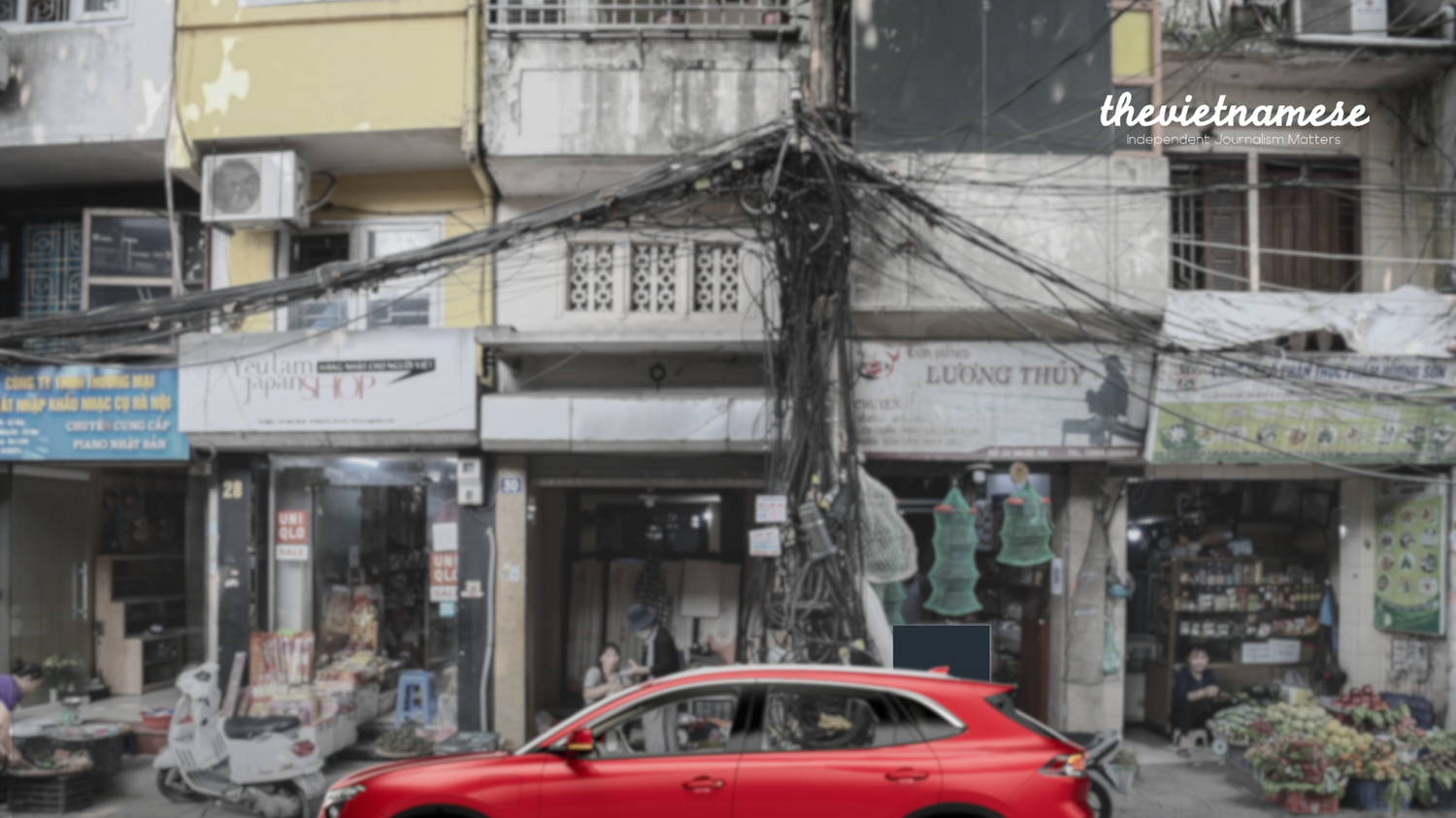Directive 20 from the Government is opening a promising new path toward reducing air pollution in the capital city of Hà Nội.
Yet, even if the national grid can supply enough power—a major challenge in itself—a more fundamental question emerges at the city level: can the city’s electrical infrastructure, especially the local power systems in its neighborhoods, alleys, and households, handle the massive new load?
The challenge of this transition goes far beyond whether citizens are willing or financially able to replace their old motorbikes. The real question is whether the capital’s infrastructure is ready to make this vision possible.
How Much Electricity Will It Take?
Despite the government’s push for electric vehicles, gas-powered motorbikes remain the dominant means of transportation in Hà Nội’s four inner districts. The scale of the challenge is immense. By 2025, Hà Nội’s population is expected to reach nearly 8.7 million, with roughly 450,000 motorbikes circulating daily inside the city’s Vành đai 1 (Ring Road No. 1) alone.
To estimate the electricity demand of replacing these, we can use the VinFast Evo 200 as an example. An average motorbike in Việt Nam travels 16.7 km per day. The Evo 200 consumes 4 kWh for a 120 km range, meaning it would need to be charged 4–5 times a month, consuming 16–17 kWh monthly. If all 450,000 motorbikes in the core districts were replaced, the daily electricity demand would increase by roughly 250,200 kWh—about 7.51 million kWh per month.
The pressure from electric cars would be far greater. Hà Nội has over one million cars. To estimate the demand, we can use the three best-selling VinFast models from early 2025: VF3, VF5, and VF6. According to the manufacturer, a VF3 consumes about 2.5 kWh for an average 30 km day; a VF5 would use 3.9 kWh, and a VF6 around 4.47 kWh for the same distance. If the city’s one million cars were evenly distributed across these three models, the total daily electricity demand would reach about 3.62 million kWh.
Combining both electric motorbikes and cars, Hà Nội’s daily electricity consumption could rise by an estimated 3.87 million kWh, or 116.1 million kWh per month. This is no small figure and makes it clear that implementing Directive 20 would place a massive new stress on Hà Nội’s already burdened power grid.
Does Hà Nội Have Enough Electricity?
To understand the potential strain on Hà Nội’s power grid, it is useful to compare the new demand to the city’s current peak consumption. On August 4, electricity demand in Hà Nội reached its highest-ever level: about 5,988 MW. If all 450,000 electric motorbikes and one million electric cars were to charge simultaneously, the total demand could surge by roughly 1,052 MW—a nearly 17% increase over that record load.
Of course, a 100% simultaneous charge is unlikely. However, more realistic scenarios are still alarming. If just 50% of vehicles were charging at the same time, the added demand would be about 526 MW (a nearly 9% increase). At 70%, it would surpass 737 MW. Even a moderate number of vehicles charging during peak hours could lead to localized overloads and outages.
Furthermore, the charging infrastructure itself will place a significant new burden on the grid, a point highlighted by Võ Quang Lâm, Deputy General Director of EVN. Consider VinFast’s planned network of 40,000 charging posts: with a minimum output of 11 kW each, this alone would add 440 MW to the grid, a figure that could exceed 1,000 MW once higher-capacity chargers are included.
Thus, the shift to electric vehicles could raise Hà Nội’s total electricity consumption by several hundred megawatts—and potentially several gigawatts—in the coming years.
The rising demand for electricity also highlights a more serious threat within Hà Nội’s electrical transmission network, especially in old neighborhoods or residential areas where safety risks are already high.
Hà Nội has nearly 9,500 streets and alleys longer than 200 meters, and about 2,300 of these residential zones are located in alleys so narrow that fire trucks cannot reach them. Roughly 90% of these alleys are less than 4 meters wide, with some “super narrow” lanes barely 50 cm across, making firefighting extremely difficult.
This physical risk is compounded by an already severe electrical fire problem. In just the first half of 2024, the city recorded 594 fires that resulted in 20 deaths and over 5 billion đồng in property damage. Compared to the previous year, fires increased by over 76%, and deaths rose by 15 cases. The primary cause for the vast majority of these incidents—more than 73%—was electrical faults.
These figures illustrate the immense danger of adding hundreds of thousands of electric vehicles to the grid without massive upgrades to both the power system and fire safety infrastructure. In old, dense neighborhoods with complex and outdated wiring, the risk of fire and explosion would rise sharply.
A Difficult but Solvable Equation
Hà Nội’s electric vehicle transition poses immense technical, infrastructural, and safety challenges for millions of its residents. Calling it a “difficult equation” does not mean that it is unsolvable. Rather, it indicates that a solution requires more than just ambitious targets. Policymakers must take a realistic look at local conditions and carefully prepare for the foreseeable risks.
The quality of life for citizens—including their convenience and safety—must remain the central goal of any development plan. From this perspective, rolling out charging stations, upgrading the power grid, and guiding citizens in safe electricity use should be seen as essential components for a successful and sustainable green transition, not only in Hà Nội but across all of Việt Nam.
Thạch Hãn wrote this article in Vietnamese and published it in Luật Khoa Magazine on October 2, 2025. Đàm Vĩnh Hằng translated it into English for The Vietnamese Magazine.

